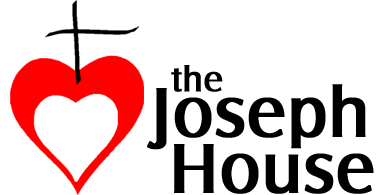The Centenary Year of Charles de Foucauld

Charles de Foucauld, the French priest of the Sahara Desert, spent his last day within the walls of his fortified hermitage in Tamanrasset, 4,600 feet above sea level in the Hoggar Mountains of southern Algeria.
Toward the evening of December 1, 1916, he heard three knocks on the door. Charles opened it expecting a delivery of mail, but instead bandits roughly dragged him outside. They tied his hands behind his back and forced him to kneel. His home, his sanctuary of prayer, was ransacked.
The approach of two Arab soldiers on camelback interrupted the thievery. The young man who was guarding Charles panicked. He pulled the trigger of his rifle and shot Charles in the head. Charles made no sound. He slowly crumpled to the sandy earth and died. The date was December 1, 1916.
Although he is not widely known, the life of Charles de Foucauld has influenced people around the world, including Sr. Mary Elizabeth Gintling, the founder of the Joseph House and the Little Sisters of Jesus and Mary.
Preparations to mark the 100th anniversary of his death have already begun. A series of events are planned for the coming year, the first of which, the official opening of the centenary year, already took place on October 31 in Nazareth. Organizers picked this day because Charles’ conversion occurred in late October of 1886.
Journalist Giorgio Bernadelli, who writes about Church affairs for the Italian newspaper, La Stampa, explains the significance of Nazareth:
The choice of Nazareth as the hub for the centenary celebrations is obviously not coincidental: it was here that de Foucauld experienced a fundamental turning point in his spiritual journey, living as a hermit in the Poor Clares convent from 1897 to 1900. He developed his ideal of following Jesus in his ‘hidden life’ too, fraternally sharing the life of those who lived in what today we would call the peripheries of the world, as the little village of Galilee – which became the heart of the mystery of the Incarnation – must have been two thousand years ago.
And so, in Nazareth this evening, there will be music and a series of readings from the diary of Charles de Foucauld, with accounts of the three years he spent in the city of the Annunciation. The Latin Patriarchal Vicar for Israel, Mgr. Giacinto Boulos Marcuzzo will be present at this evening’s event being held in the Holy Family School operated by the Don Guanella religious institute. (1)
Msgr. Marcuzzo offered his reflections on the spiritual activities that opened the centenary year:
This evening we prayed for peace, reconciliation and brotherhood in Nazareth. We prayed in our villages and in our cities; and we asked God to help us practice more the teachings from the Bible as well as the writings of Charles de Foucauld: we want to experience universal brotherhood for a better life, because we are all brothers, sons of God.
Let’s then pray and ask for his intercession in order to obtain healing, especially healing from indifference to men or indifference to miracles. We are weak in the practice of our faith and of the Gospel. We must take the Gospel more seriously, just as the Blessed Charles de Foucauld used to say, and we have to live the word of God in the most profound way. (2)
This year of the commemoration of the death of Charles de Foucauld presents an opportunity to study his life and devise ways to bring its fruitfulness into the world today. “It encourages us to make a renewed effort to change our life in order to follow Jesus more faithfully in living the Gospel and to ‘turn religion into love’ in very concrete ways, each in our own Nazareth and according to our circumstances.” (3)
Charles abandoned his life into the hands of God. He sought the lowest place, and gave humble, loving service to the poor and marginalized. His home in the desert became known as a place of brotherhood, a “fraternity,” where everyone – whether rich or poor, Christian, Jew, Muslim, or atheist – was welcome.
His witness has only become more relevant as time goes on.
(1) http://vaticaninsider.lastampa.it/en/world-news/detail/articolo/de-foucauld-de-foucauld-de-foucauld-medio-oriente-middle-east-medio-oriente-44363/
(2) http://cmc-terrasanta.com/en/video/christians-in-the-holy-land-and-the-church-2/the-centennial-of-the-death-of-blessed-charles-de-foucauld-9592.html
(3) European Fraternity of Charles de Foucauld via https://www.facebook.com/groups/1639898572934329/


I am trying to find the photo Blessed Charles to of Eucharist that developed into a photo of the child Jesus.
Hello, we are sorry, but we are not familiar with the photo referred to in your comment.
Thank you, I really want to get some prayer cards with tht picture…so àdoreable. The one picture I saw was on Pinterest, but I couldn’t get onto the site. Hope you can help. Barbara
I don’t know where that story originated about the miraculous image but the image that is posted (thousands of times) with the story about the monk in the desert was painted by C. Bosseron Chambers and the title is “Christ at Five.”
It was copyrighted in 1933. That would have been 17 years after the death of Charles de foucauld. A detail of the image is titled “Divine Innocence.” They are beautiful images but I question the authenticity of the story about a miracle showing that image.
I was given a holy card reproduction of the photo and compared it to the painting, and they’re actually different. The painting has three stylized roses around Jesus’s head and inside the halo in the painting, but these do not appear in the photo reproduction. It’s an old card, too. The card on back actually says that it wasn’t Blessed Foucauld who took the picture but one of the pther desert fathers in his order.
I am looking for it too. Perhaps the story is false.
Fr. Lenny Tighe, who is very knowledgeable about Br. Charles, has said the story is false. You can contact Fr. Lenny at this website for more information: https://charlesdefoucauld.info